The last stop for bus #4 on this year’s church tour in the Bridgeport neighborhood of Chicago was the Church of St. Barbara on S. Throop St.
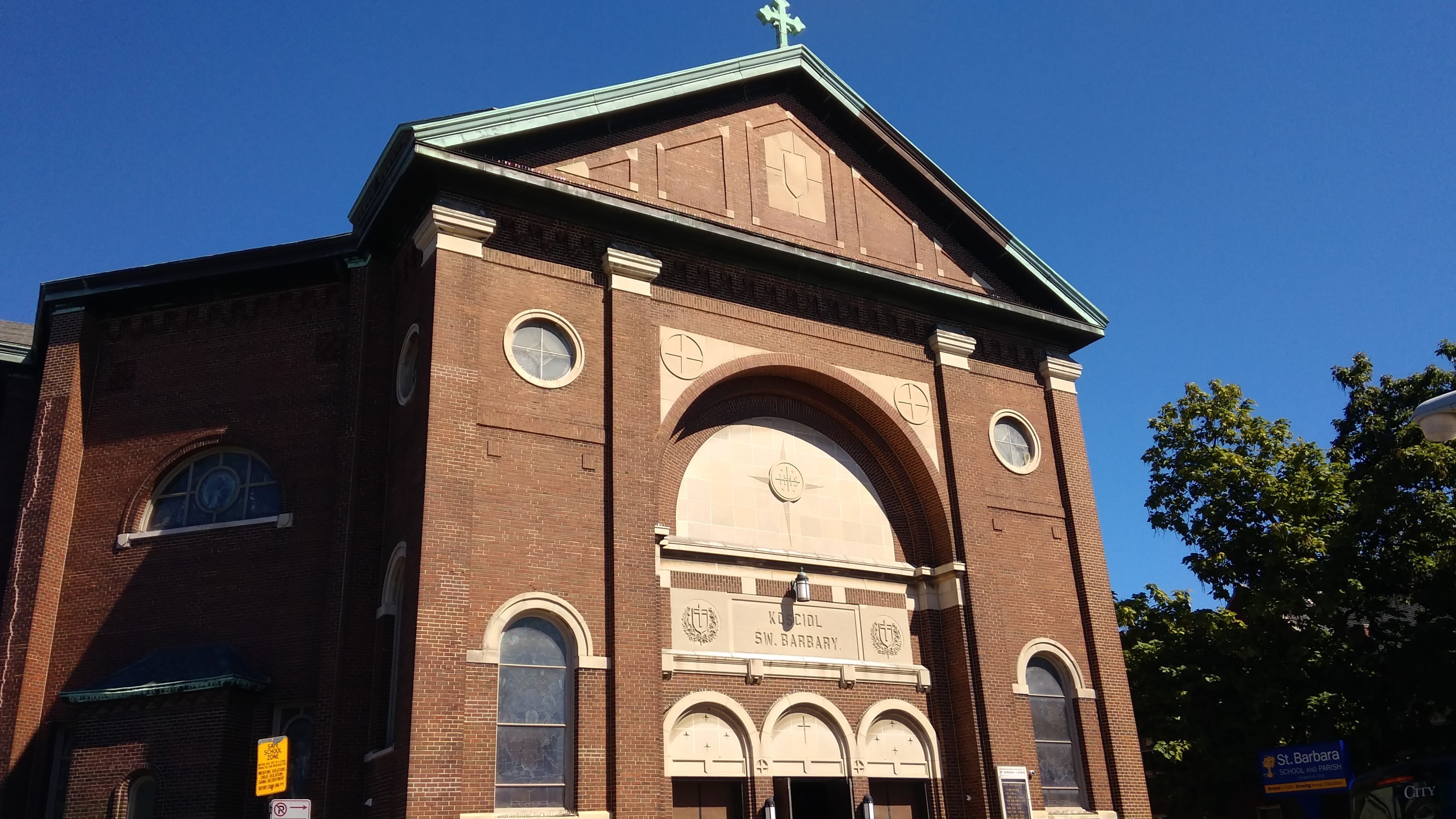 It’s an octagonal Renaissance-style church and another edifice created by a Polish congregation in the early 20th century. These days, the congregation is much more ethnically mixed, but Polish still greets visitors at the main entrance.
It’s an octagonal Renaissance-style church and another edifice created by a Polish congregation in the early 20th century. These days, the congregation is much more ethnically mixed, but Polish still greets visitors at the main entrance.
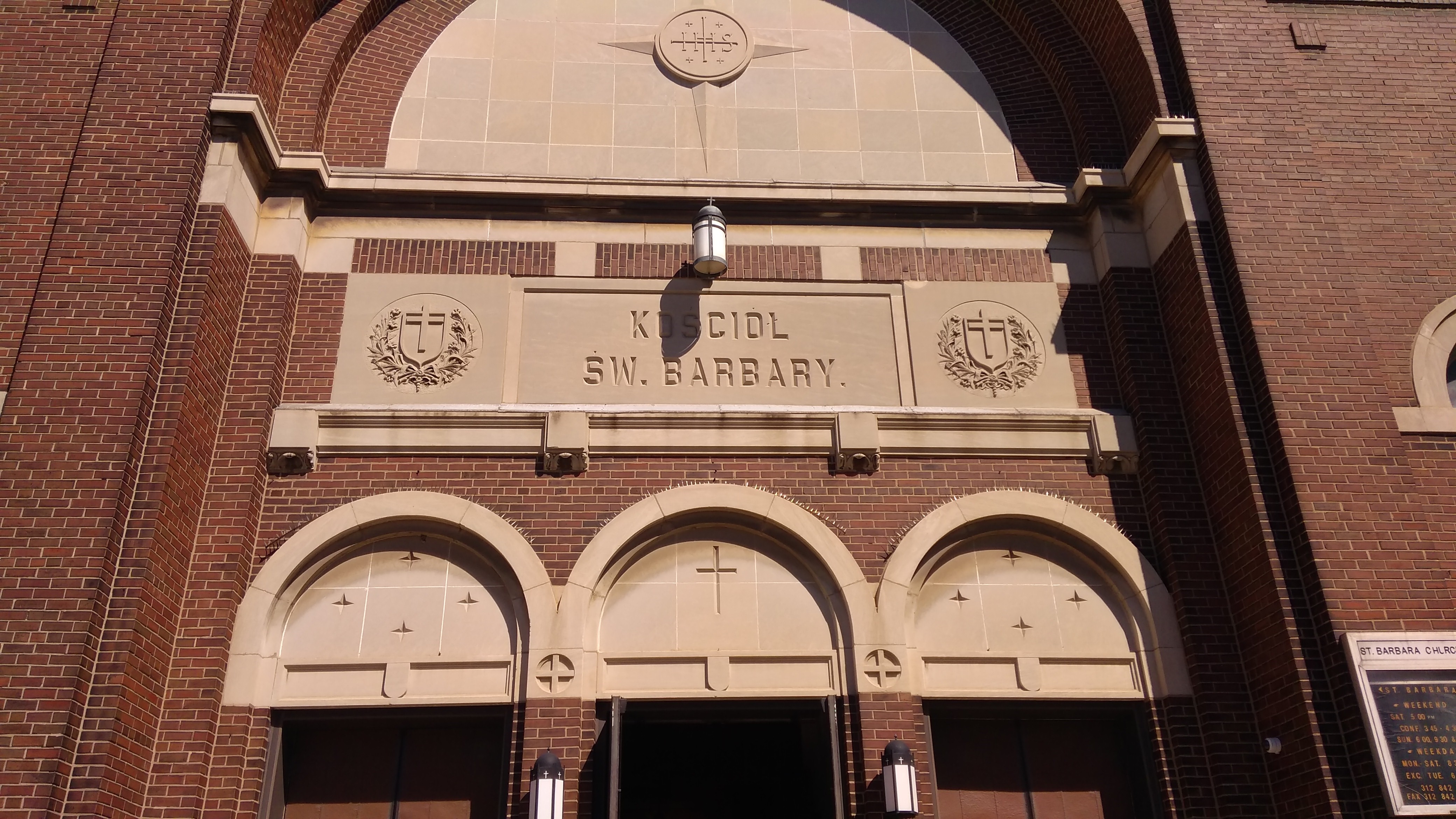 St. Barbara is another Worthmann & Steinbach design, finished in 1914, the second we saw on Saturday after First Lutheran Church of the Trinity. Architects tend to be ecumenical in their clients, I figure. A commission’s a commission.
St. Barbara is another Worthmann & Steinbach design, finished in 1914, the second we saw on Saturday after First Lutheran Church of the Trinity. Architects tend to be ecumenical in their clients, I figure. A commission’s a commission.
The octagonal shape makes it a little hard to comprehend the interior by looking straight ahead. You have to spend time looking around.

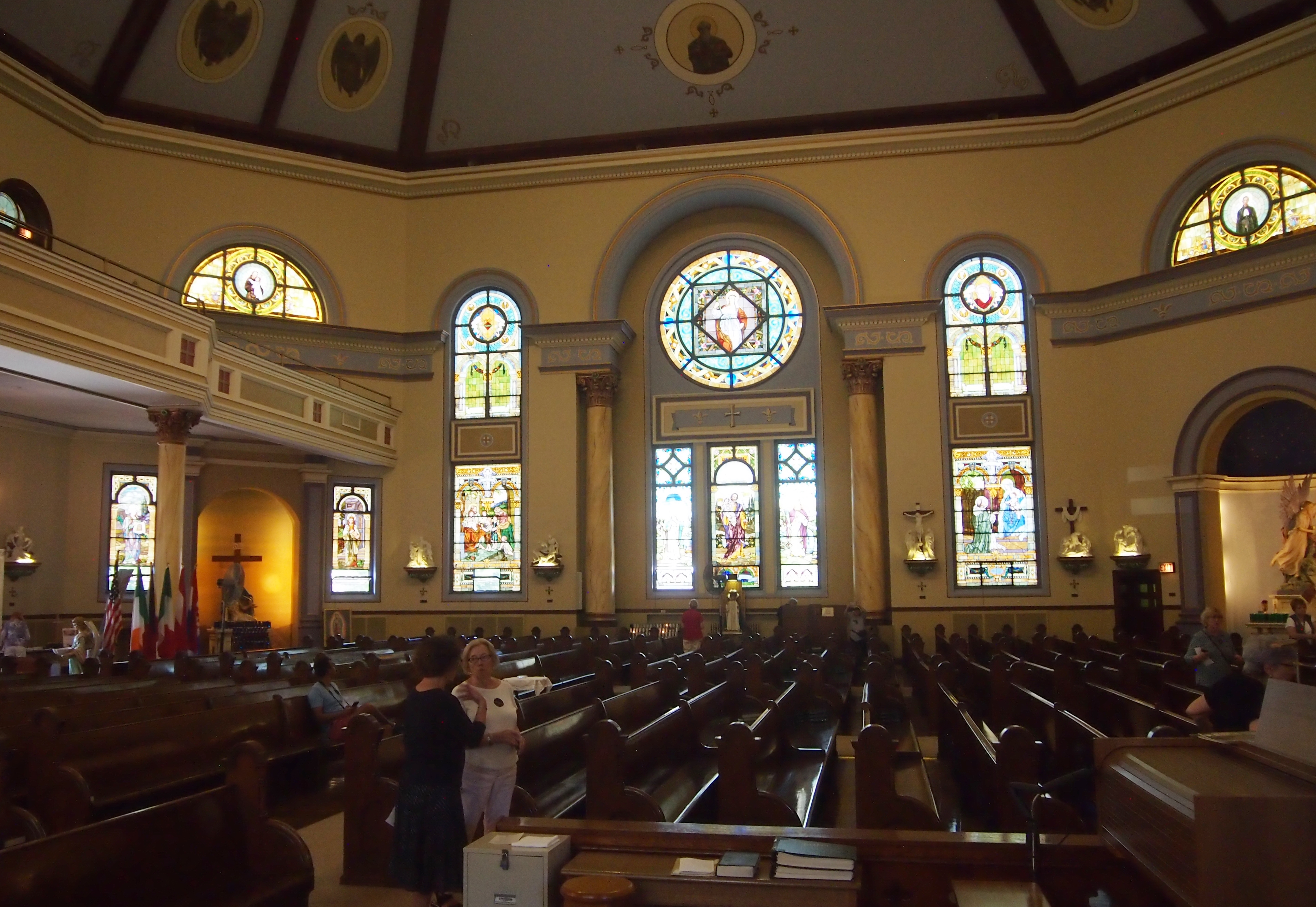 And looking up.
And looking up.
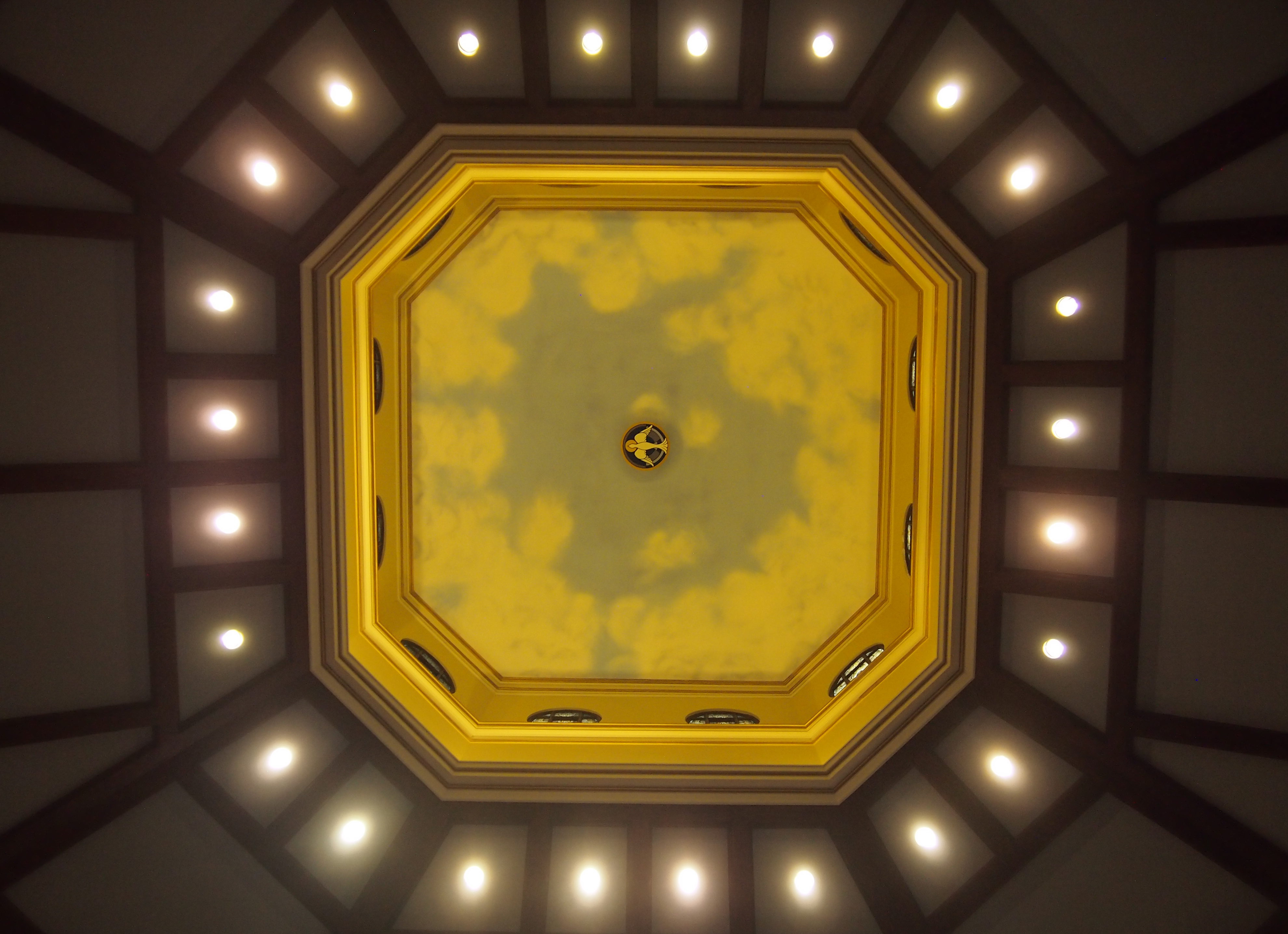 Here’s St. Barbara, looking down on the altar.
Here’s St. Barbara, looking down on the altar.
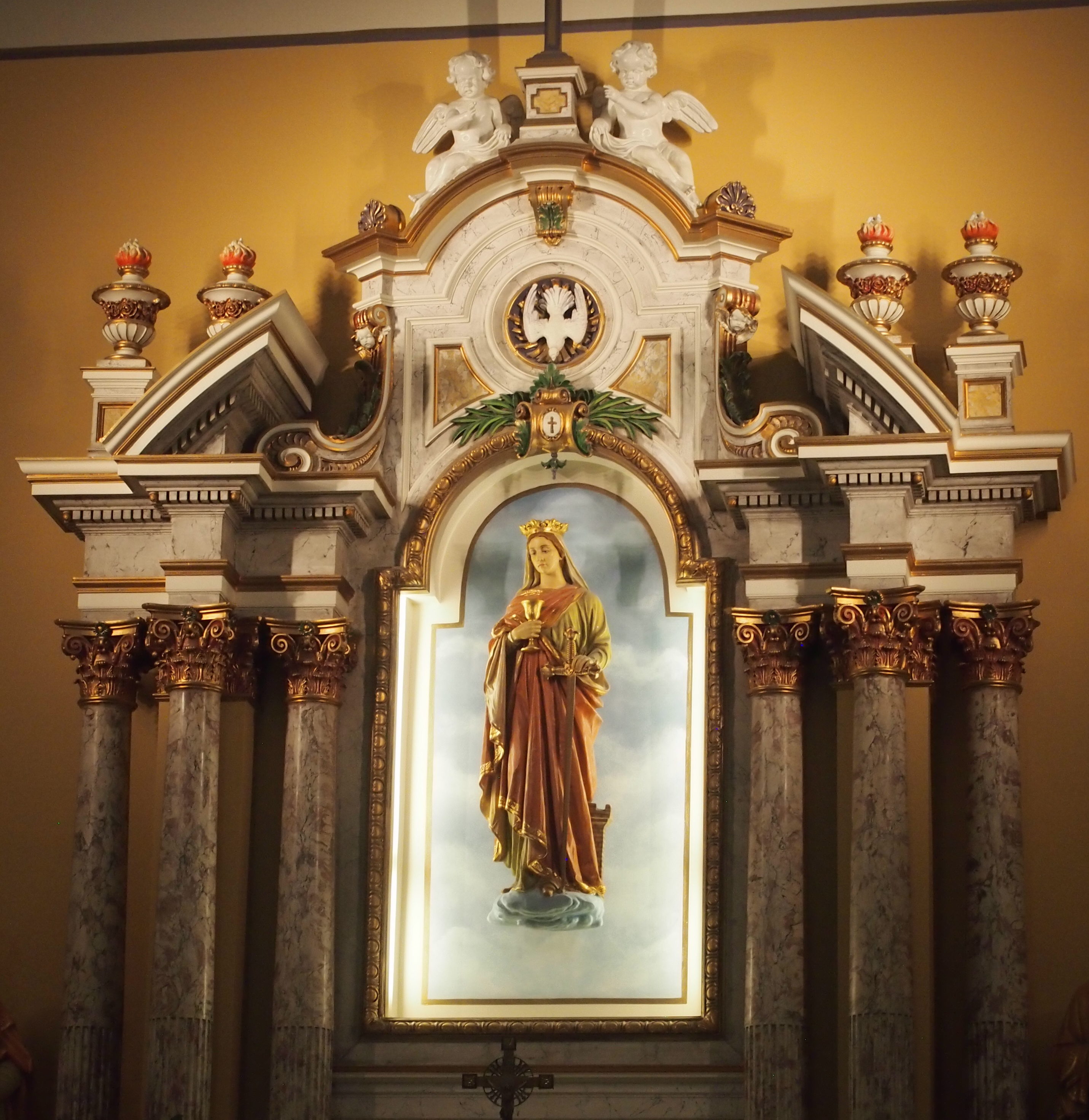 I couldn’t remember who St. Barbara was thought to be, but the sword is distinctive. So I looked her up later.
I couldn’t remember who St. Barbara was thought to be, but the sword is distinctive. So I looked her up later.
“Virgin and Martyr,” New Advent says. “There is no reference to St. Barbara contained in the authentic early historical authorities for Christian antiquity, neither does her name appear in the original recension of St. Jerome’s martyrology. Veneration of the saint was common, however, from the seventh century.
“Barbara was the daughter of a rich heathen named Dioscorus. She was carefully guarded by her father who kept her shut up in a tower in order to preserve her from the outside world… Before going on a journey her father commanded that a bath-house be erected for her use near her dwelling, and during his absence Barbara had three windows put in it, as a symbol of the Holy Trinity, instead of the two originally intended.
“When her father returned she acknowledged herself to be a Christian; upon this she was ill-treated by him and dragged before the prefect of the province, Martinianus, who had her cruelly tortured and finally condemned her to death by beheading. The father himself carried out the death sentence, but in punishment for this he was struck by lightning on the way home and his body consumed.
“The legend that her father was struck by lightning caused her, probably, to be regarded by the common people as the patron saint in time of danger from thunderstorms and fire, and later by analogy, as the protector of artillerymen and miners.”
One of those very popular saints without any actual historical basis, it seems. No matter. She has a lot of places named after her besides the city in California.
After looking around the sanctuary, we went to the adjacent school for snacks. That’s where I saw something else I’d never seen before.
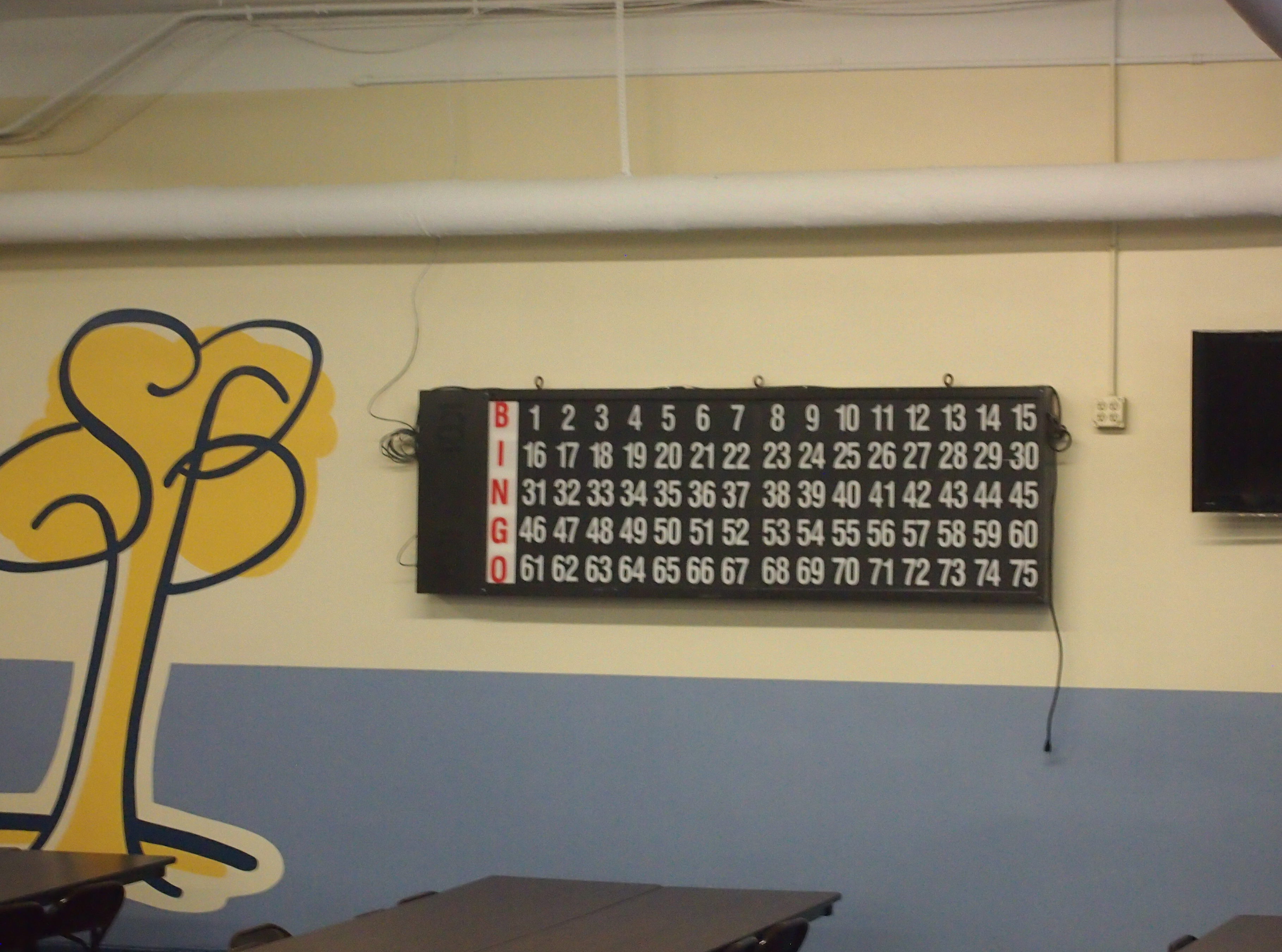 A bingo sign. Plugged in and everything. Pretty much as mysterious to me as the tales of St. Barbara.
A bingo sign. Plugged in and everything. Pretty much as mysterious to me as the tales of St. Barbara.